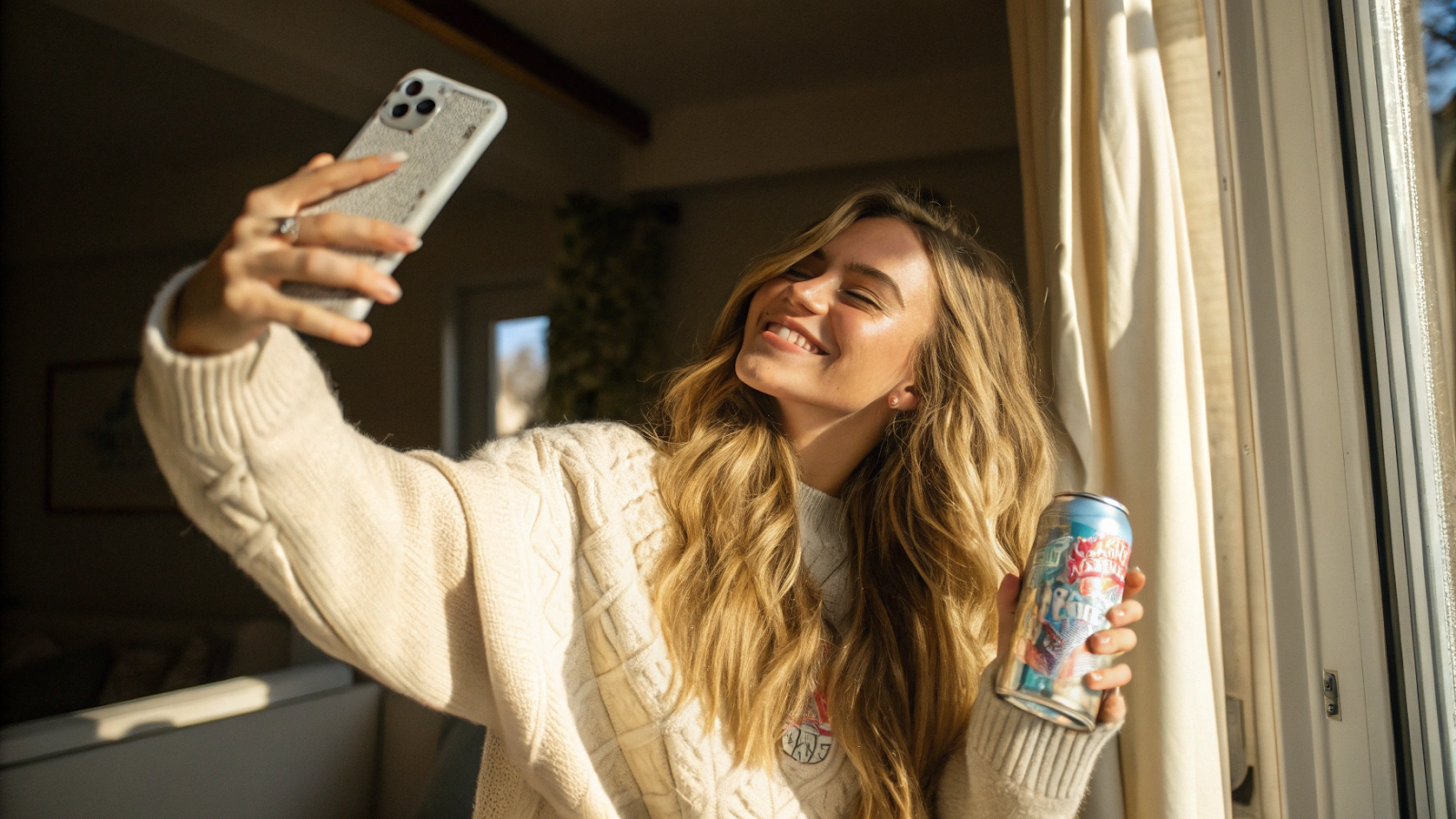There is currently a huge demand for agile content creation, and part of that involves repurposing content strategically. Brands need access to custom quality content, quickly and at a reasonable rate. Enter: Creators. Creators fuel content creation for websites, e-commerce, in-store displays and more. Repurposing content involves taking an asset from a completed campaign and strategically reusing that asset for other advertising initiatives, or even reposting it again on the same platform at a later date.
We are really proud of how some of our brands get creative with repurposing our work. (It’s pretty freakin’ flattering actually!) One of our household product brands repurposed assets to create an entirely custom Amazon home page experience. A retail brand of ours once repurposed a static asset they absolutely loved on a billboard in Times Square in NYC that gained a ton of traction. A CPG client once repurposed a recipe asset and had the image and recipe printed on the actual cereal package. Talk about snackable content, right?
It’s downright heartwarming when a brand loves our creator’s work so much that they want to repurpose assets elsewhere, but it’s crucial that those rights are crystal clear from the get-go.
Ensure rights are explicitly outlined in the brief, which serves as the legally binding contract between a creator and a brand. It’s important that creators know exactly how a brand intends to repurpose assets so that creators can charge accordingly based on usage rights, because yes, it does impact creator rates. Sometimes, after a campaign, a brand decides they want to repurpose assets they weren't originally planning to reuse. In this case, they will have to reach out to creators to ensure that creators are compensated and aligned to reusing the content. To avoid this negotiation after a campaign, it's important to arrange that at the start of a campaign so it can be included in the brief and original communications with a creator.
There are different types of usage rights. Here is a list that we can modify based on your brand’s needs, where brands have the license to modify and/or re-use any content that is submitted and approved for the following purposes:
- Posts to social media accounts
- Website(s) and mobile app(s)
- Ads on social media
- Digital ads
- Print ads
- TV ads
- Out-of-home advertising
- Creator grants the brand a license to modify and/or re-use ideas (recipes, DIY projects, etc.) submitted for the campaign, but brand has no rights to the Creator's blog post or the copy written for it.
Should a brand ask for lifetime usage rights to influencer content?
You’re going to love this, but it absolutely depends. That’s great, right? You read an article to find an answer and ultimately it’s nuanced, but here are some questions to help guide your team when deciding if you should receive content rights in perpetuity. At Popular Pays, we offer 6 months of usage rights by default, but this can be extended to 12 months or in perpetuity depending on campaign circumstances, and will result in an incremental fee per creator. We can tell you that creators are pushing back against content rights, sometimes even pushing back on 12 months or 6 months of usage rights. Ultimately, the balance to be mindful of is being sure you have the rights outlined in the brief, but also not including too many rights that you might not need, because overshooting your rights can mean overshooting your budget, turning your content strategy from savvy to spendy.
- Is the content evergreen or not? For example, if the content is promoting a specific limited-edition flavor then the likelihood of repurposing those assets dwindles—once the promotion ends, so does the relevance of the content. If you are collecting holiday assets that could technically be used the next season or used in other marketing materials, that’s another story. Keep in mind that your branding might be changing soon too!
- What type of assets do you need? Is your team looking to generate content to fuel your new website, or are you focusing on short-form video content to build out your socials? Identify not only if you need static images or dynamic video assets, but also what specs or dimensions. Do you want b-roll for your website or polished video content that fits YouTube specs? By defining these elements early on, you’ll ensure your content not only looks great but also performs flawlessly across all platforms.
- Will your team promote the asset with paid amplification? We strongly believe in the effectiveness of amplifying content with paid media, and promote content on behalf of the creator’s handles often. Creators often increase their bids to accommodate brands amplifying their content with paid and they also will negotiate with the brand to minimize paid usage. We’ve seen creators charge a monthly or even weekly cost, even if they aren’t macro creators (wild times, right?). If your strategy doesn’t include running paid media, requesting lifetime usage rights for these assets might not be the most cost-effective approach.
- What creator size are you working with? Typically, nano and micro creators may be more lenient on usage rights, whereas mid-tier, macro and mega creators will likely command significantly higher rates based on these rights. This distinction could shape your strategy—especially if repurposing content is a key priority. Creators with larger audience sizes aren’t necessarily against lifetime usage rights, but we see a huge increase in creator rates, so be prepared to dish out some dough for that. We get the hype though, who wouldn’t want a celebrity-level talent endorsement on your product to be posted across your different digital, traditional, and social platforms? We say go for it, just be sure to meticulously define usage rights.
- What type of advertising does your team have access to? If you “wear all the hats” on your marketing team, aka you are essentially the whole team (I’m not sure why the industry loves using the hat analogy but here we are), then you likely can forgo certain rights that don’t align with your brand’s needs. For example, placements such as “TV ads” or “Out-of-home advertising” if you know that your team isn’t planning on that placement anytime soon. However, some brands or agencies have access to teams that specialize in TV ads or out-of-home advertising, and we’d suggest looping them into the conversation while the brief is being built, because what team wouldn’t love some extra planning that results in re-purposing solid assets?
What are your thoughts? As always, drop us a line or reach out to [email protected] to learn more about how we can help you!

















